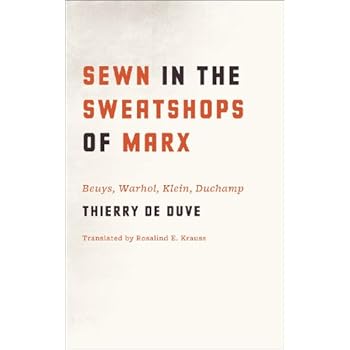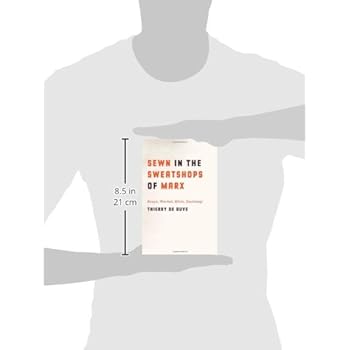Sewn in the Sweatshops of Marx: Beuys, Warhol, Klein, Duchamp
Category: Books,Arts & Photography,History & Criticism
Sewn in the Sweatshops of Marx: Beuys, Warhol, Klein, Duchamp Details
Review “Thierry de Duve’s is a crucial and utterly distinct voice in the field of modern art. Delightfully original and engaging, Sewn in the Sweatshops of Marx combines the author’s inimitably bold thinking with an unusual sensitivity to the ways that particular works articulate the convergence of aesthetics and economics. Its gorgeously constructed essays tell this art’s stories so well, they often read like the best biographical fiction.” (Darby English, University of Chicago)“That Beuys, Warhol, Klein, and Duchamp were variously engaged in rewriting the terms of production, circulation, and consumption of art, and did so by creating new work which challenged the received nature of the artwork is an oft-mentioned, oft-theorized fact. No one has gone so far in thinking through the dramatic intentions and achievements of these artists as de Duve, who in this free radical of a book, maps categories of political economy found in the pages of Marx onto their projects. De Duve’s recruitment of Marx is of such originality as to return the reader to Marx’s own texts, whose astonishing insights into production, mechanization, price, money, exchange value, the creativity of labor, and the innovation of markets have been neglected in recent times but demand reawakening. Written with verve, intricacy, and narrative fluency, this book probes and proves that these are the parameters in which the avant-gardes transact, and through which they must be brought to speech.” (Daniel Herwitz, University of Michigan)“The book is a success at creating a visual and textual cartography, as following the red thread proves that you can indeed get there (political economy) from here (modern art/aesthetics) and vice versa. Likewise, the author provides fresh new perspective where the four artists and Marx are concerned. While many critics and authors have attempted to view modern and postmodern art through a similar lens, none have achieved such an enthralling and vivid image.” (Visual Studies) Read more About the Author Thierry de Duve is an art historian, critic, and curator. His publications in English include Kant after Duchampand Clement Greenberg Between the Lines. Rosalind E. Krauss is University Professor in the Department of Art History and Archaeology at Columbia University. Read more

Reviews
A fun and creative book in which De Duve uses Marx’s theory of value and production as a paradigm, or I’d even say, as a matrix in which to place and thus be able to discuss the four, very different, artists in the title. The book was commissioned as a monograph for a gallery show featuring Beuys, Warhol, Kline and Duchamp; but due to de Duve’s (negative) opinion of Kline’s work at the time, the monograph was rejected, and years later released as this book.I only gave it 3 stars because as much as I had fun reading it, this is not a book for people who don’t know the work of these artists or something of Marx, for that matter.



